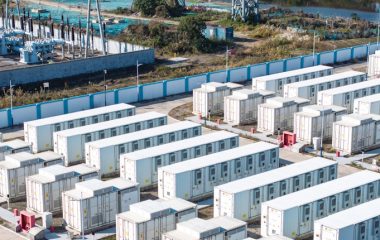
Photo: Nicholas Doherty on Unsplash
The European Commission issued the Strategy on Offshore Renewable Energy and said it leans on the sector to become a powerhouse for global development. The document outlined the efforts to increase the capacity 25 times to 300 GW in offshore wind turbines by 2050 and add another 40 GW in other ocean energy tech.
The European Union has all that it needs to rise up to the challenge of ramping up investment in offshore renewables, the European Commission’s Executive Vice-President for the European Green Deal Frans Timmermans said at a presentation of the strategy for the sector, which revealed the need for EUR 800 billion in investment in wind turbines and other technologies.
Two thirds of the sum are needed for grid infrastructure and most of funds are seen coming from private companies.
Environmental protection must be ensured
The proposed expansion will be based on the vast potential across all the sea basins and on the global leadership position of EU companies in the sector, the bloc’s executive body added and pointed to opportunities for the industry, green jobs and competitiveness. The commissioners vowed to protect the environment, biodiversity and fisheries in the process.
EU vowed to protect the environment, biodiversity and fisheries in the process
The strategy proposes to increase offshore wind capacity from its current level of 12 GW to at least 60 GW by 2030 and to 300 GW by 2050. The commission said it aims to complement it with 40 GW of ocean energy and other emerging technologies including floating wind and using algae to make biofuel.
“We must step up our game by harnessing all the potential of offshore wind and by advancing other technologies such as wave, tidal and floating solar. This strategy sets a clear direction and establishes a stable framework, which are crucial for public authorities, investors and developers in this sector,” Commissioner for Energy Kadri Simson stated.
Commissioners line up necessary administrative steps
The objectives need to be integrated with national maritime spatial plans, which coastal states are due to submit by March, the European Commission said and stressed it would encourage cross-border cooperation. The next step is a framework under the revised
Trans-European Networks for Energy (TEN-E) regulations for long-term offshore grid planning.
The move includes upcoming revisions of the state aid guidelines on energy and environmental protection and of the Renewable Energy Directive and opening up the Recovery and Resilience Facility together with funding by the European Investment Bank and other financial institutions.
Horizon Europe is tasked with supporting research and development and other schemes like the Innovation Fund and Modernisation Fund should participate, according to the announcement.
Work, opportunities for land-locked countries
The strategy underlines the need to improve manufacturing capacity and port infrastructure and to increase the appropriately skilled workforce to sustain higher installation rates.
Offshore wind produces clean electricity that competes with and sometimes is cheaper than existing fossil fuel-based technology, the commissioners asserted. The strategy highlights inland areas where manufacturing and research is already supporting offshore energy development.
Romania alone has a 22 GW potential for offshore wind power with fixed turbines in the Black Sea and 94 GW in total
The EU now has just 40 MW in floating offshore wind power capacity and another 13 MW in ocean energy technologies such as wave and tidal devices. Floating wind turbines and those that are fixed to the bottom can also be built on lakes and rivers.
Of note, Energy Policy Group determined in a new study that Romania alone has a 22 GW potential for offshore wind power with fixed turbines in the Black Sea and 94 GW in total. In other news, 18 organizations and companies just established the Coalition for Offshore Energy and Nature. It includes WindEurope, BirdLife Europe, Climate Action Network Europe – CAN Europe, TenneT, Ørsted, Vattenfall and Siemens Gamesa.


















Be the first one to comment on this article.